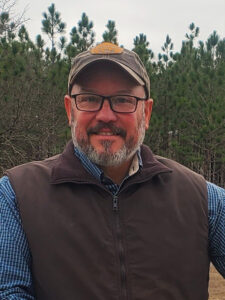

The Wildlife Society: Q&A: How to Conserve Wildlife Without Conflict
March 7, 2024
by Joshua Rapp Learn, The Wildlife Society
Saving species doesn’t always have to pit stakeholders against each other
Imagine a world of conservation without conflict, where landowners, state and federal agencies, and environmental organizations all got along, working toward the common goal of helping imperiled species thrive.
It’s easy to see such a notion as a pipe-dream in a world fraught with endless lawsuits and protests. But one organization believes such a step is possible—in fact, they have made great achievements in the conservation world operating on such a principle in just over five years.

Conservation Without Conflict, a coalition involving state and federal wildlife managers, environmentalists, energy and forestry companies, and other private stakeholders, was founded in 2017 on the principle that while stakeholders often dispute the shape and regulations surrounding at-risk species, they usually agree on the basic tenet of conserving our natural world. Rather than seeing conservation as a conflict between opposing parties, the coalition seeks to find ways to encourage collaboration. Members include the U.S. Fish and Wildlife Service, Ducks Unlimited, Southern Company, the National Wildlife Federation, Texas A&M Natural Resources Institute, and many others.
Fresh from the coalition’s 2024 summit meeting in Arlington, Virginia last week, The Wildlife Society caught up with executive director of Conservation Without Conflict, Leopoldo Miranda-Castro. Our conversation below is edited for style and brevity.
How did the summit go?
The summit was really good—there was a lot of energy in the room. We had probably about 45 different organizations and individuals there. One of the things I wanted to accomplish was to reenergize the coalition. Because of COVID, we couldn’t meet for a few years, so we wanted to bring everybody back.
What progress has Conservation Without Conflict made?
Some of our biggest accomplishments so far are bringing people together to discuss potential issues, identifying barriers, and knocking down those barriers. Those could be policy barriers or disincentives. They could be on-the-ground issues—you name it.
Specifically, one of the big things that the coalition members have recently been able to accomplish was the first-ever partnership between the U.S. Fish and Wildlife Service and industrial timberland owners, Resource Management Service, LLC (RMS). That included a private lands agreement to voluntarily reintroduce reticulated flatwoods salamanders (Ambystoma bishopi) onto their land in the Florida panhandle. That’s the first time the USFWS’ tool for conservation partnerships has been used for those purposes. That is a deal I’m extremely happy about. It took many, many years, and finally they were able to crack that code and implement it.
What were some of the conflicts you have had to work through?
One of them is how to protect private landowners’ privacy when they enter into agreements with the government, and especially when dealing with listed and at-risk species. A lot of landowners are looking for that kind of information. How do we minimize the risk to those landowners in terms of liability or any other type of risk? When proactively sharing site-specific data with the government, that data may be available to the public, including organizations that may use it in ways that may affect these landowners. For example, environmental groups may file a lawsuit to try to force landowners to do things the way these groups want. Lowering those risks to a level that private landowners can manage them and benefit species—and keeping those working lands working—creates kind of a win-win situation. Before the RMS timber company agreement, those were concerns from the private landowner’s perspective. We hope that that model, now that there’s a precedent, could be expanded across the nation. It’s a really simple tool.
What role will Conservation Without Conflict play moving forward?
We closed out the summit by asking the participants about next steps and actions. We had short-, mid- and long-term actions. Short-term and mid-term goals include increased communication and supporting more on-the-ground conservation.
But I’m really excited about long-term ideas, like bringing up young professionals and students—people who are starting their careers right now—into the Conservation Without Conflict collaborative framework. Eventually, we’ll be able to change the culture of conservation within the NGO community, landowners, industry and agencies. Our vision is that collaborative conservation will be the default approach to conservation, instead of conflict and litigation.
Even longer term, we plan to develop some curriculum programs in academia where we can have minors and majors where Conservation Without Conflict frameworks can be applied and learned as part of an actual degree. Eventually, we’ll get there, and we’ll be able to affect long-term change.
What’s at stake if we don’t start minimizing conflict in the conservation community?
We will continue to be too polarized. At the end of the day, it will affect working lands because we will eliminate incentives to have healthy economies and healthy human communities. And also, the species will suffer because they will be caught in the middle of conflict. We’re going to have a lot of regulations and paperwork. Don’t get me wrong, it’s still important to have good regulations. But we need to have regulations that actually make sense and that provide incentives to everybody, including private landowners on working lands, to do the right thing, because they are already doing it—that’s why the species are still there.
--
Header Image: Leopoldo Miranda-Castro speaks at Conservation Without Conflict’s 2024 Summit in Arlington, Virginia in February. Credit: Joshua Learn
Originally published here.





